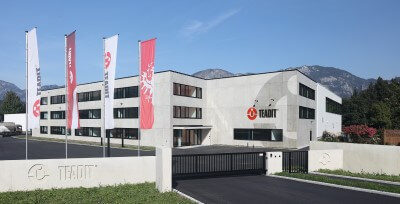Since its inception in 1958, TEADIT has been at the forefront of innovation in industrial sealing solutions, with leakage control and environmental preservation at the heart of its endeavors. Now, the company is building on its expertise to play an active role in the rapidly emerging green hydrogen sector.
With a manufacturing and distribution network spanning more than 50 countries, the TEADIT Group is a truly global player. Their comprehensive range of sealing products can be found in a wide variety of applications, including in industries governed by stringent environmental and safety regulations. “If you look at our product lines, it becomes immediately apparent that all we are trying to do is to reduce emissions and create a safe working environment,” says Carlos Girão, TEADIT Group’s Director of R&D. While the company’s green credentials are further strengthened by its growing presence in the biofuels market, the energy transition presents many other opportunities for growth and innovation, which TEADIT is determined to capture. Green hydrogen is one of them, not the least because the company is perfectly positioned to become a major provider of sealing solutions to manufacturers of water electrolysers and hydrogen fuel cells.
PTFE seals for H2 applications
The world is in a race to secure a clean energy transition, and green hydrogen produced by water electrolysis powered by renewable energy is seen as being central to reaching net zero emissions. As electrolyser manufacturers advance existing technologies, develop new ones, and ramp up their production capacities to meet the surging demand, the demand for electrolyser components is mushrooming, too.Large electrolyser and fuel cells stacks can be comprised of several hundreds of individual cells that must be properly sealed to ensure safe and efficient operation. “A 5 MW alkaline electrolyser requires around 500 seals,” explains Frank Weber, CEO of EMEA and Asia-Pacific, TEADIT. “We are talking about very large seals measuring up to 1.6 metres in diameter, and large quantities, too,” he continues. “Future electrolyser plant capacities will be measured in gigawatts and could require 100,000 seals for each GW of capacity, so the opportunity for companies like ours to help accelerate the scale-up of green hydrogen production globally is immense.”
Due to its excellent sealing properties, PTFE has become a common material of choice for gaskets used in electrolysers. Mr. Weber explains: “Electrolysers are nothing new and have been found in industry for decades. The seals used in the past were often made of asbestos coated with PTFE. Nowadays, however, asbestos is no longer used, so gaskets made entirely of PTFE have become a standard alternative.”
Customization capabilities
As a nascent industry, green hydrogen production has given rise to many start-ups, while more established electrolyser and fuel cell manufacturers continue to innovate.This has inevitably led to the development of various technological and design solutions, which in turn leads to different component requirements, including seals.

“Currently, most electrolysers are still custom-made, but funding to support mass production of electrolysers is increasing rapidly, especially in Germany,” explains Mr. Weber. “Since we are in the early phase of the transition to fully automated production, we see many customers coming to us with their finished product and saying: ‘do you have a seal for it?’ It would be much wiser and beneficial to approach us in the early stages of product development so that we can develop customized solutions for them. When it comes to PTFE and expanded PTFE, our R&D, engineering expertise, and manufacturing capabilities are difficult to match, globally. This gives us an edge over our competitors and allows us to develop customized sealing solutions perfectly meeting specific needs of our clients and their products. We are able to adjust our manufacturing processes at any stage of their product development, but the sooner we are approached, the higher the level of customization possible.”